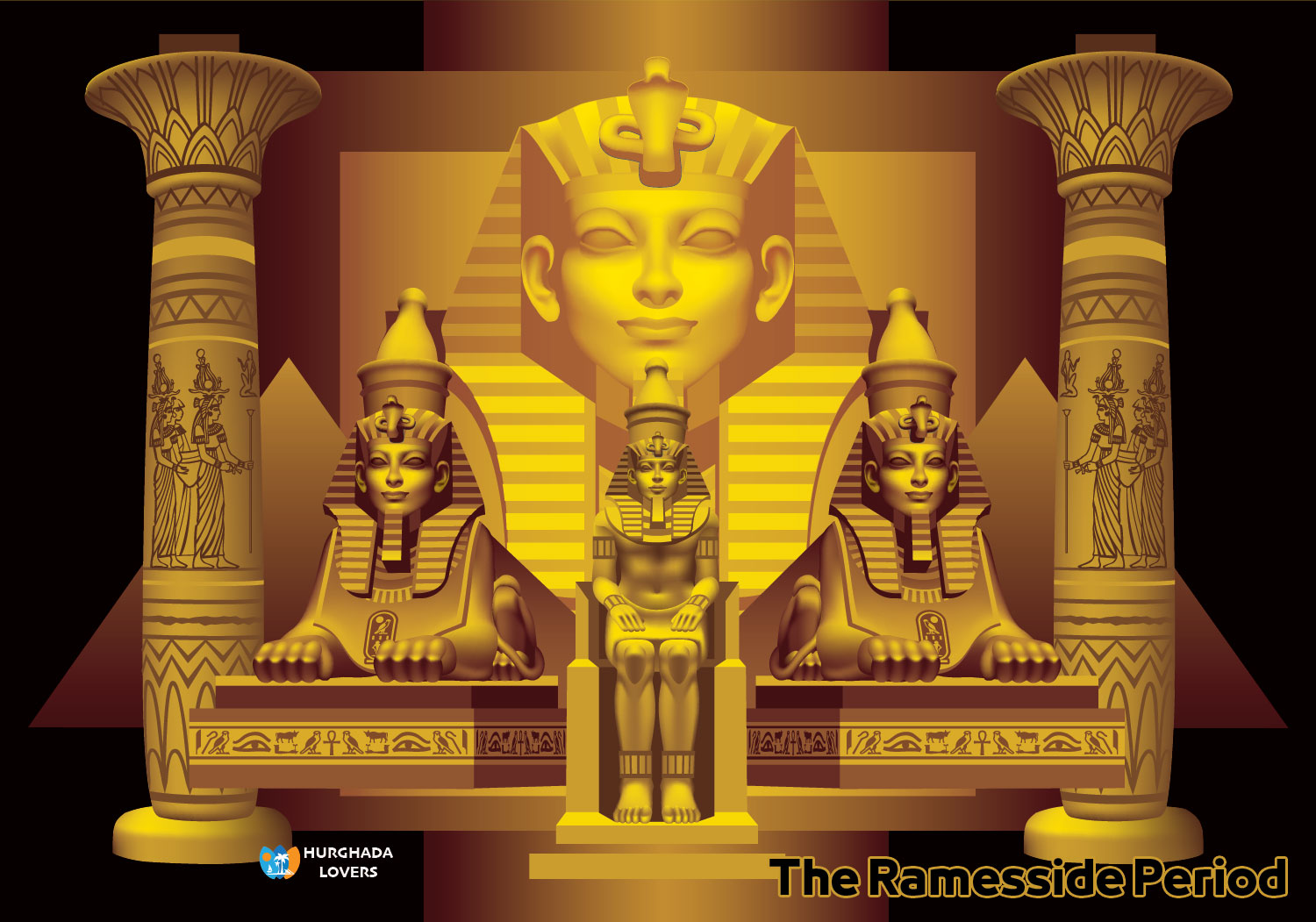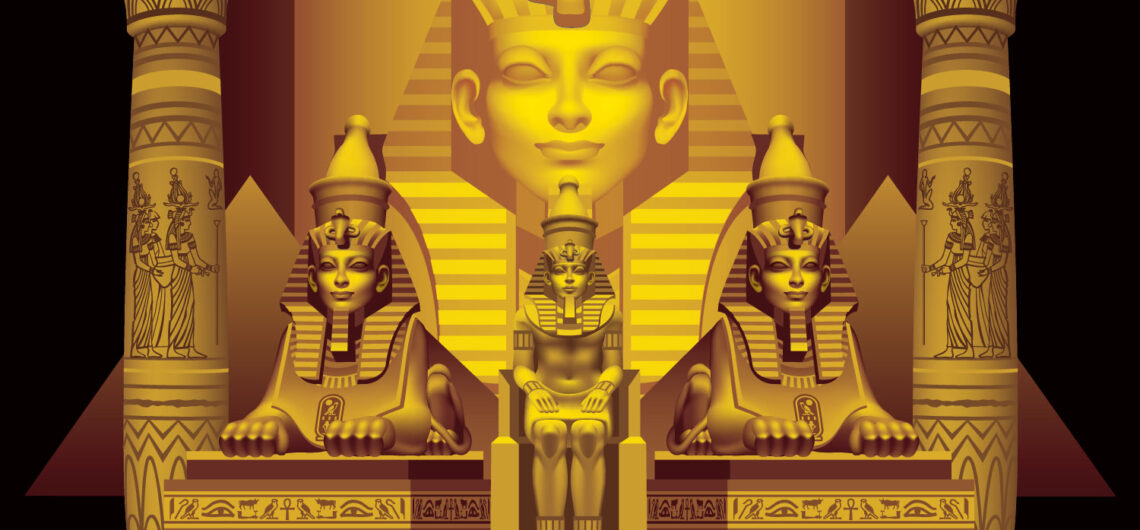The Ramesside Period in Ancient Egypt History & Facts Third Intermediate ” The Age of the Pillars” & Late Period in Pharaonic Civilization and more…
Hurghada lovers Offer Luxury Hurghada to Luxor Tours | El Gouna to Luxor Tours | Makadi bay to Luxor Tours | Sahl Hasheesh to Luxor Tours | Soma bay to Luxor Tours.
The Ramesside Period
Third Intermediate Period – The Age of the Pillars
Period: 1085-663 BC.
Dynasties 21-22-23-24-25 include branch and intent.
The years of the reign of the first three Ramses were the last of Egyptian power, and the third transition period began after Ramses (Ramses) III, and it seems that the kings of Egypt abandoned Thebes after Ramses IX and took Lower Egypt as the center of their residence for two centuries, although they continued to bury their dead in Thebes.
After the independence of Lower Egypt under the authority of one of his sons, dynasty 21 separated from the Empire and the unrest broke up. After the kings of this dynasty ruled Egypt as foreign kings and included themselves in the Egyptian dynasties, they were the kings of the 22nd dynasty of Libya.
Egypt then experienced internal unrest during which the kingdom was divided into several small independent principalities, and then the Kushites (Ethiopians) ruled Egypt.
Late Period:
Period: 663-332 BC.
Dynasties are 26-27-28-29-30-31
The Assyrians occupied Egypt and annexed it to their empire during Nubian rule. It is clear that ancient Egypt began to collapse after being ruled by foreign nations such as the Libyans, Ethiopians and Syrian A.S.
The Egyptian religion in the age of childhood – The Ramesside Period:
The Egyptian religion was in a critical situation at that time, in the face of political setbacks and progressive civilizational declines, the priests of Egypt resorted to the fundamentalist return of the Egyptian religion at the time of the Ancient Empire and it seems that the stages of civilizational regression sometimes impose such a religious regression and there is a strong belief that the people of the ancient era reached the flag one point that cannot be exceeded.
This phase was called the Saite era which witnessed the passion of the Saite kings for researching the ancient papyrus texts and plaques that raised the ground for many generations, and for collecting, examining and organizing them, thus illustrating why the past has triumphed over the present and why the priests supporting this reactionary movement ignore what is happening around them in the world.
This collection of origins was accompanied by a return to the texts of ancient magic and the popularity of its applications, and the magical animal forms of the gods were revived, and the totals of the gods appeared as a mixed animal mosaic, as if a return to the animal world had stabilized after the Egyptians poisoned their gods with monotheism in the modern kingdom, another manifestation of regression.
At that time, the cult of Seth, symbol of destruction, and at the same time invalidated the role of the goddess Isa (Isis) until she became the mother goddess of the ancient Egyptian nation, and this cultural regression appears, because she evoked the mother goddess in the form of Isis, who worshipped as the protector of Egypt.
Suddenly, the role of the Apis calf (a form of the God Ptah) grew, worshipping him by all means and burying his body in a solemn ceremony in the special cemetery of the Serapium next to Memphis, but the reverence of this calf began during the reign of the Old Kingdom. , and has now become so great that religious intolerance among the inhabitants of Alexandria in Roman times has reached a great point.
Apparently, the priests of the Saîte era interpreted these outward manifestations with the philosophy by which they interpreted their religious superstitions, thus creating something that did not exist or was attributed to them before.
The Ramesside era, or let us be more specific, is the era of Ramesses II and the era in which the second empire was established.
When did The Ramesside Period rule or era begin?
● In fact, when The Ramesside Period rule began, it was the end of the Eighteenth Dynasty, and at the same time it was an opening that expresses a new era that a great dog grew up in the history of Pharaonic Egypt and in its politics as well, whether it was at home or abroad, which is the era that represents the establishment of the rule of the second empire in Ancient Egypt at the hands of a group or series of great pharaohs.
● Where in that period, Horemheb had completely eliminated that old religious system or the system of monotheism, which was rude and chosen by “Akhenaten”.
● As that act was considered in its essence as a strong and bold leap towards the construction of a new belief that is the true monotheism, and then the country had returned after the rule of Akhenaten again to its old or antique traditional religion that it had worn before for itself many years ago and since the dawn of History.
● The one who led that old or reactionary movement was Horemheb, and he was the last one of the kings of the pharaohs in this family, and then he succeeded in restoring things again to normal.
What were the conditions of the country at that time?
● After Horemheb died before he was able to achieve all those things that he aspired to, and then he succeeded him again on the throne, his groaning leader and grand vizier, and at the same time he was his only crown prince who, before his death, had trained him completely in all matters. Which pertains to how the king’s policy in the country and what we mean by him here is King Ramesses the First.
● Also, after assuming power, he had given birth to a group or a large series of great pharaohs and rulers who, despite their stature from the dwarf, are not affiliated from a distance or close to those qualities that exist in the pharaohs of the eighteenth dynasty, these pharaohs who had previously entered into Their bodies are full of luxury, and then they were weak, and there was a great degeneration of their morals.
Where did The Ramesside Period family originate?
In fact, the family of the Pharaonic king, Ramesses, had grown up within the range of the Sturit district, located in Al-Qafla, in the northern Delta range.
Also, during his reign, a group of great works were carried out by that Pharaonic family that had distinguished them before during the periods of Egyptian history.
Sources: Book of Egyptian Civilization, Khazal Al-Majidi


